Welcome to the enchanting world of Japanese Larch Bonsai, where artistry and nature intertwine to create a captivating masterpiece. These living sculptures bring a sense of tranquility and elegance to any space they grace. In this article, we will delve into the care guide for Japanese Larch Bonsai, exploring its exquisite appearance, light requirements, watering techniques, fertilizing tips, potting essentials, propagation methods, growth and development stages, as well as potential pests and diseases.
Appearance of Japanese Larch Bonsai
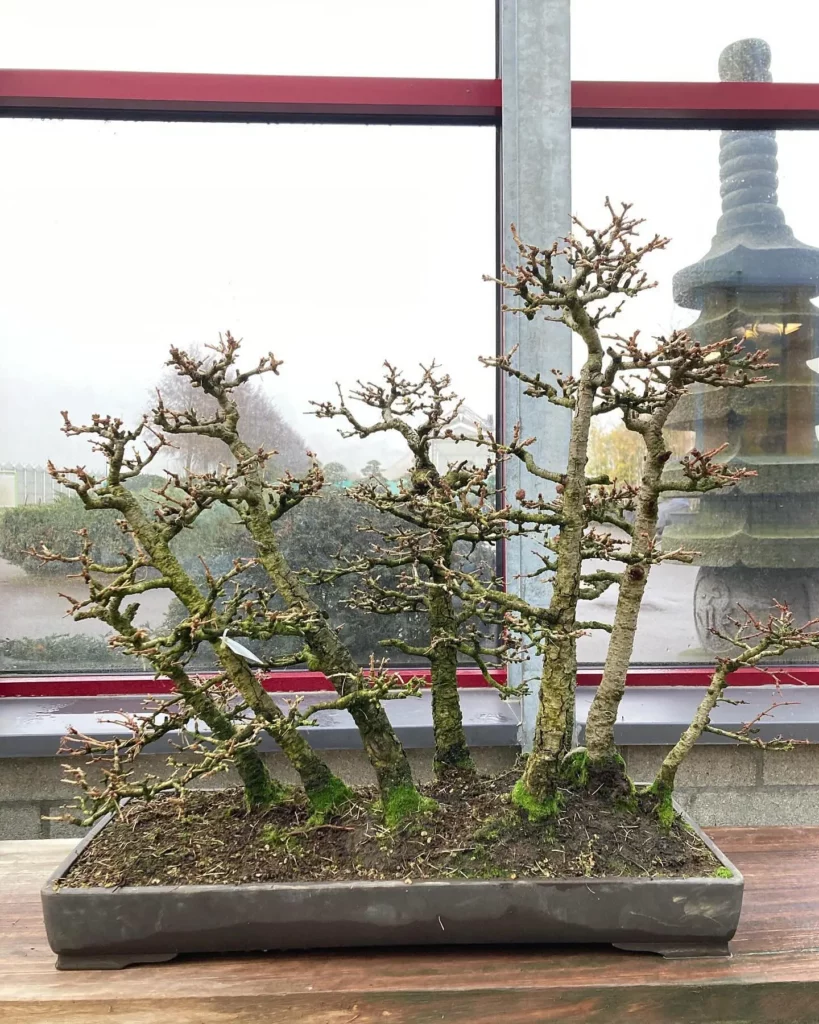
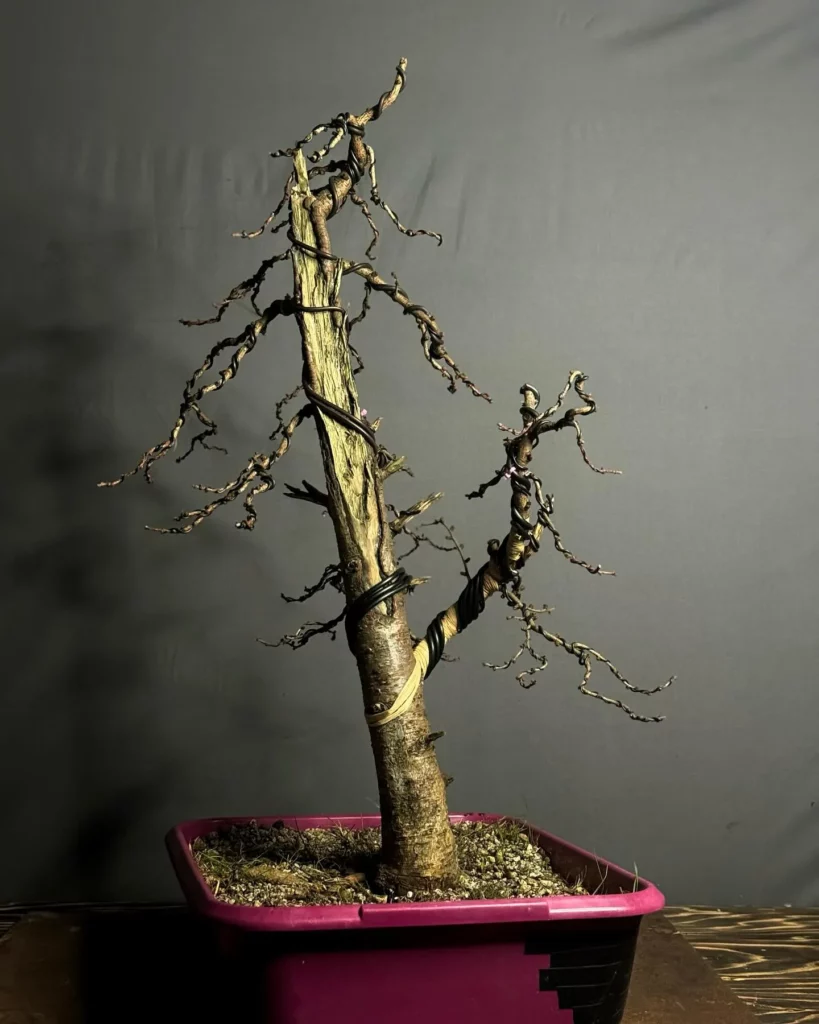
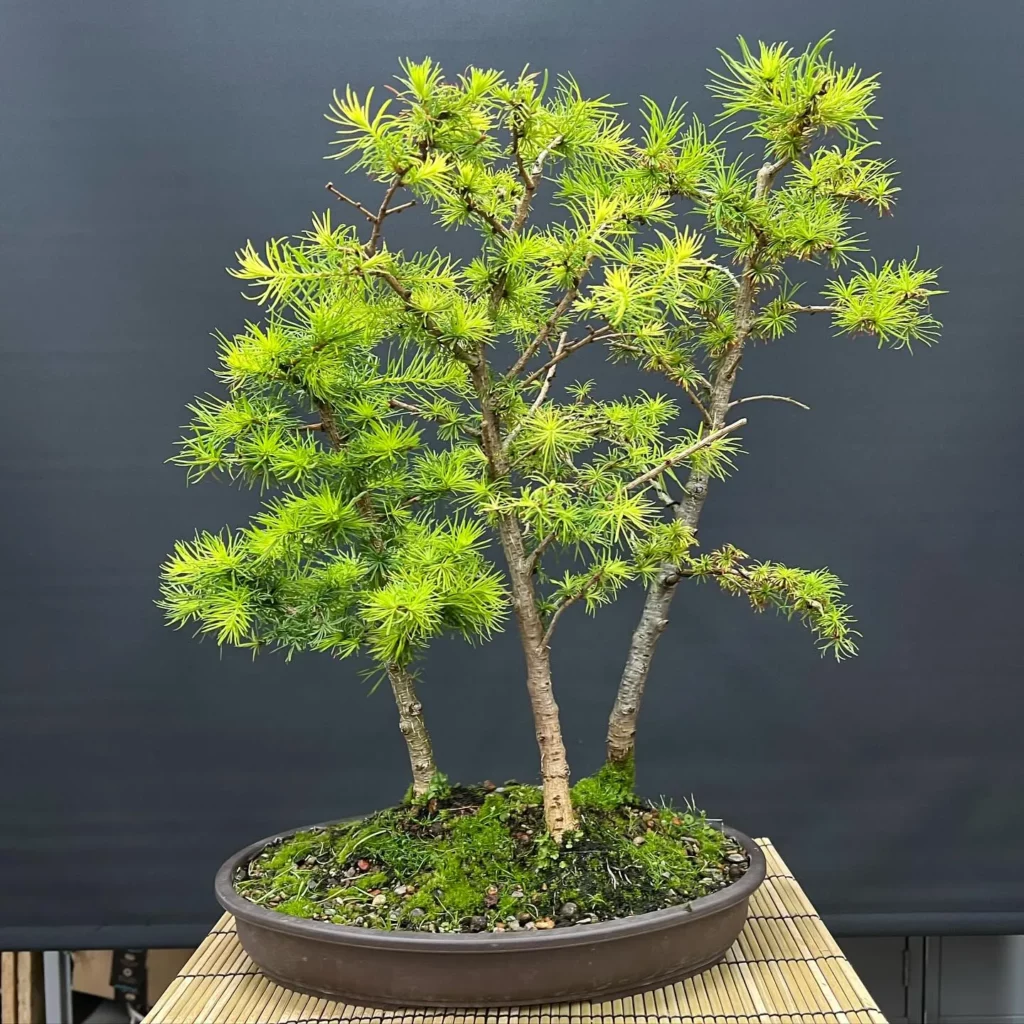
Japanese Larch Bonsai is known for its slender, feather-like foliage and vibrant green color. It features a conical shape with branches that radiate outward from the trunk. The bark is smooth and gray when young, but it develops a rough, textured appearance as it ages. During autumn, the foliage turns a beautiful golden-yellow color, adding to the visual appeal of the bonsai. Overall, the appearance of Japanese Larch Bonsai exudes a sense of grace and elegance.
Light Requirements for Japanese Larch Bonsai
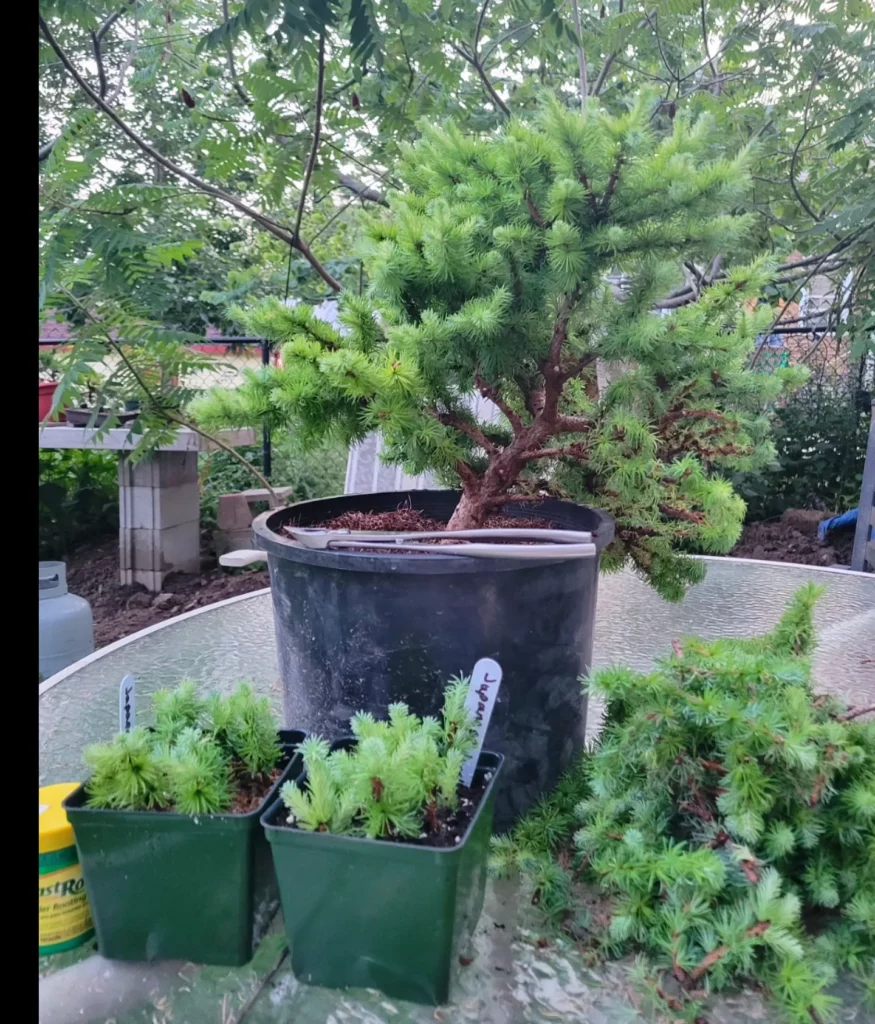
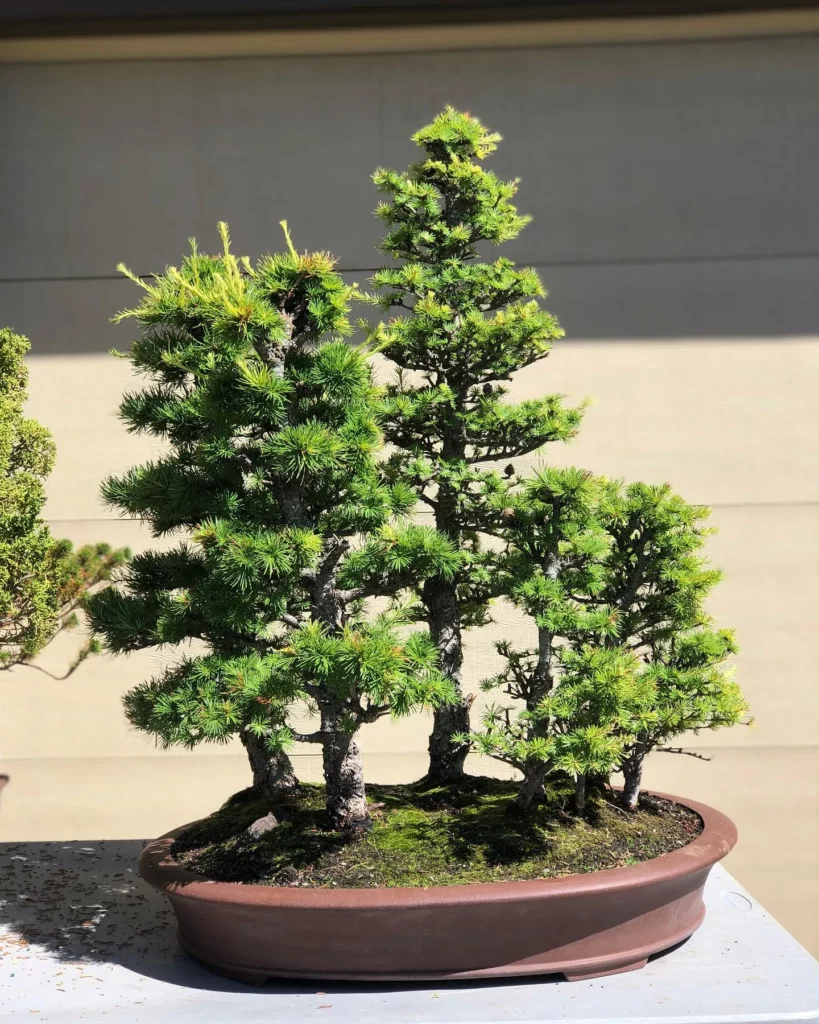

For your Japanese Larch Bonsai to thrive, it needs the right amount of light. This bonsai variety thrives in full sun to partial shade. To maintain its health and vitality, make sure your bonsai receives at least 6 hours of direct sunlight each day. However, be cautious of intense afternoon sun, as it can lead to leaf burn. Finding the right balance of light will promote proper growth and ensure that your Japanese Larch Bonsai retains its vibrant foliage throughout the year.
Watering Japanese Larch Bonsai
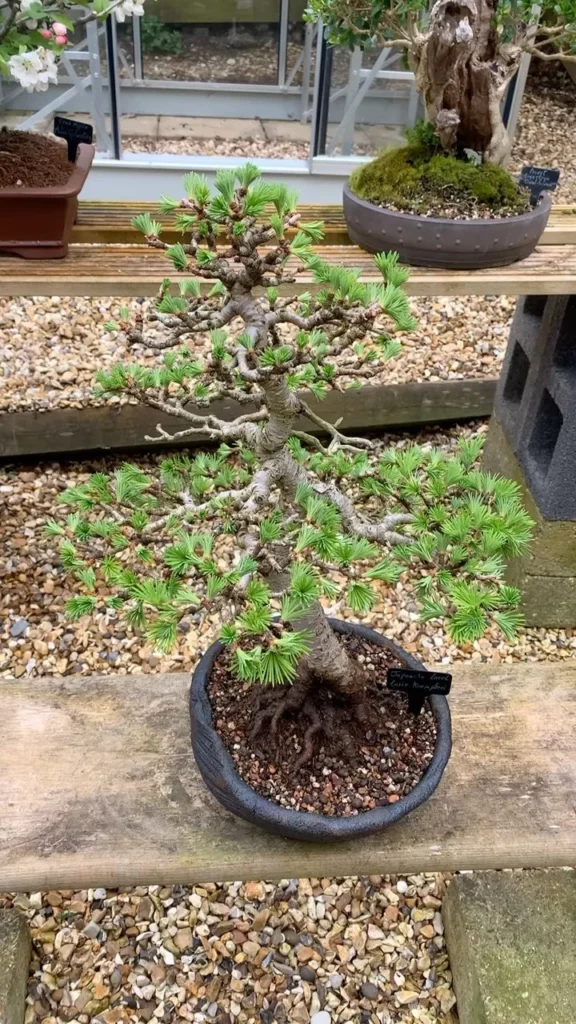
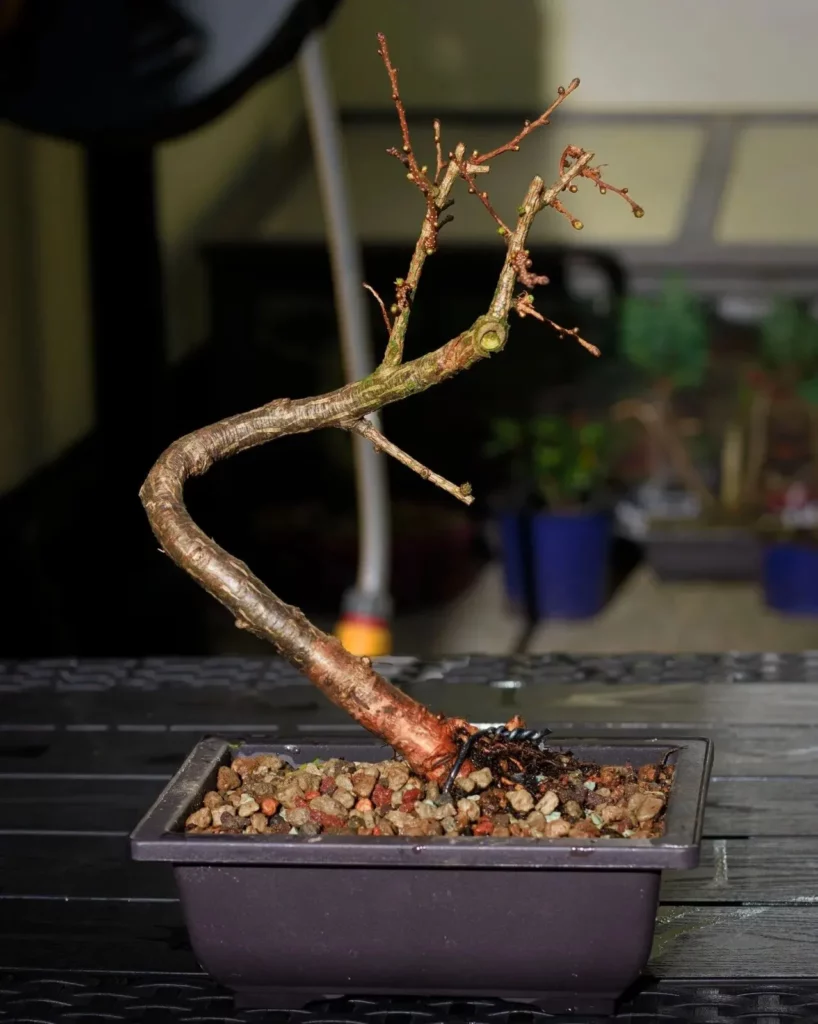
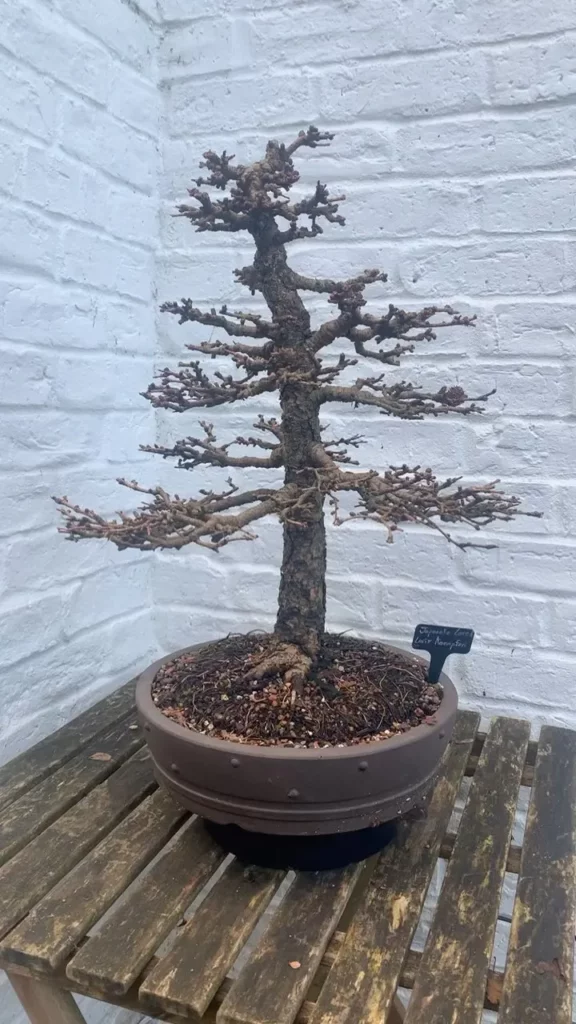
Proper watering is crucial for the health of your Japanese Larch Bonsai. To ensure optimal growth and prevent stress or dehydration, it’s important to follow these watering guidelines:
- Consistently Moist Soil: Japanese Larch Bonsai prefers soil that is consistently moist, but not waterlogged. Avoid allowing the soil to completely dry out between waterings.
- Touch Test: As a general rule, water your bonsai when the top inch of the soil feels dry to the touch. This is a good indicator that it is time to water.
- Deep Watering: When you water your bonsai, make sure to water deeply so that the water reaches the root system. This helps to ensure that the entire root system receives adequate hydration.
Fertilizing Japanese Larch Bonsai
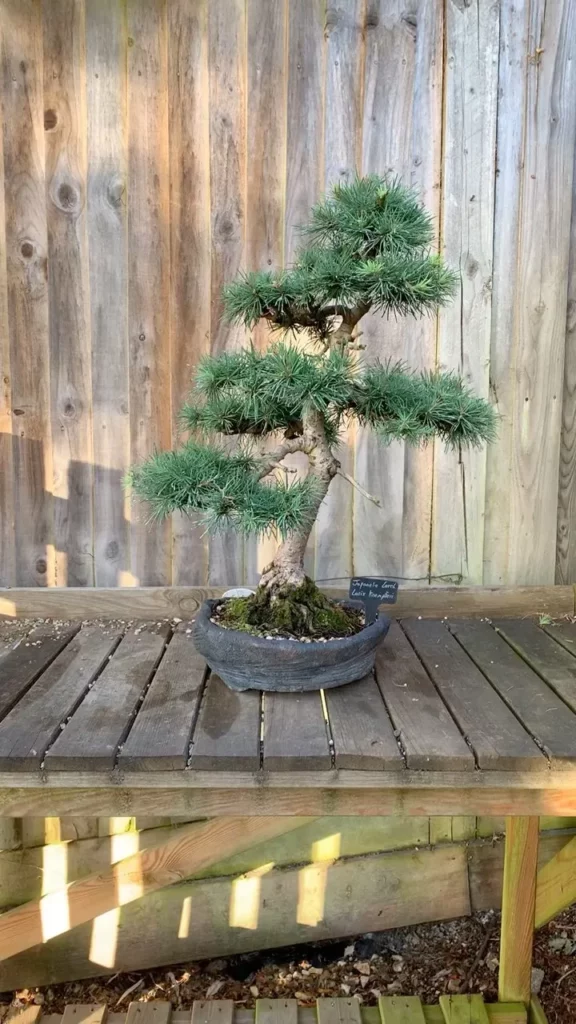
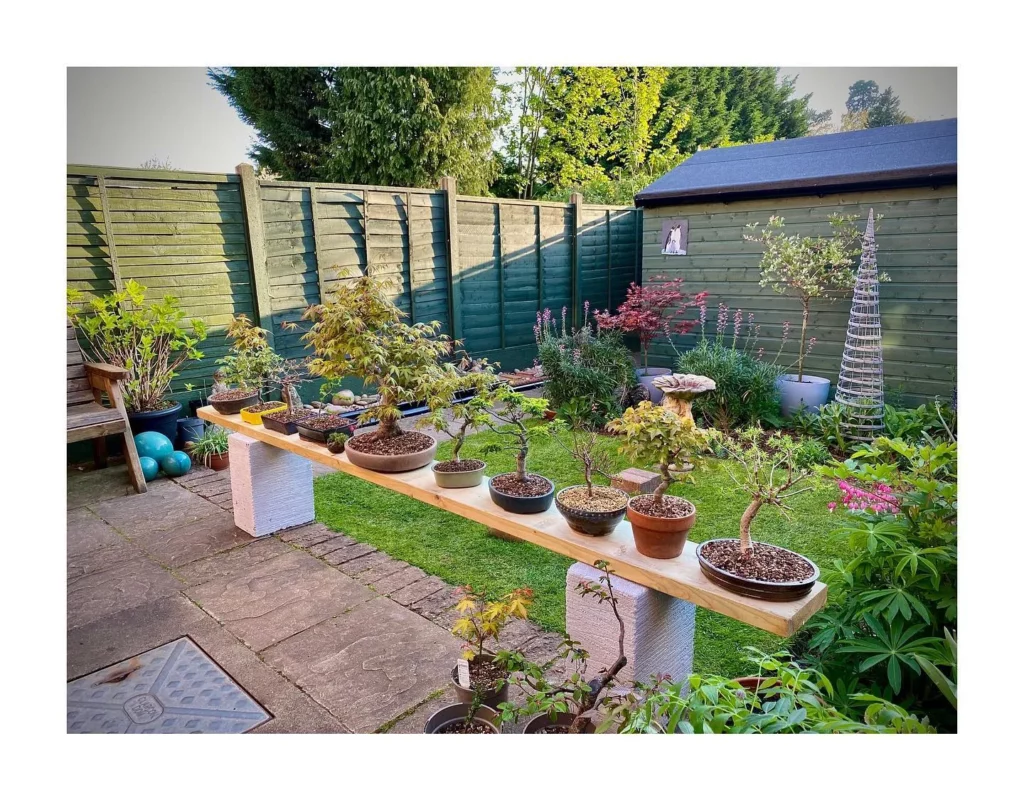
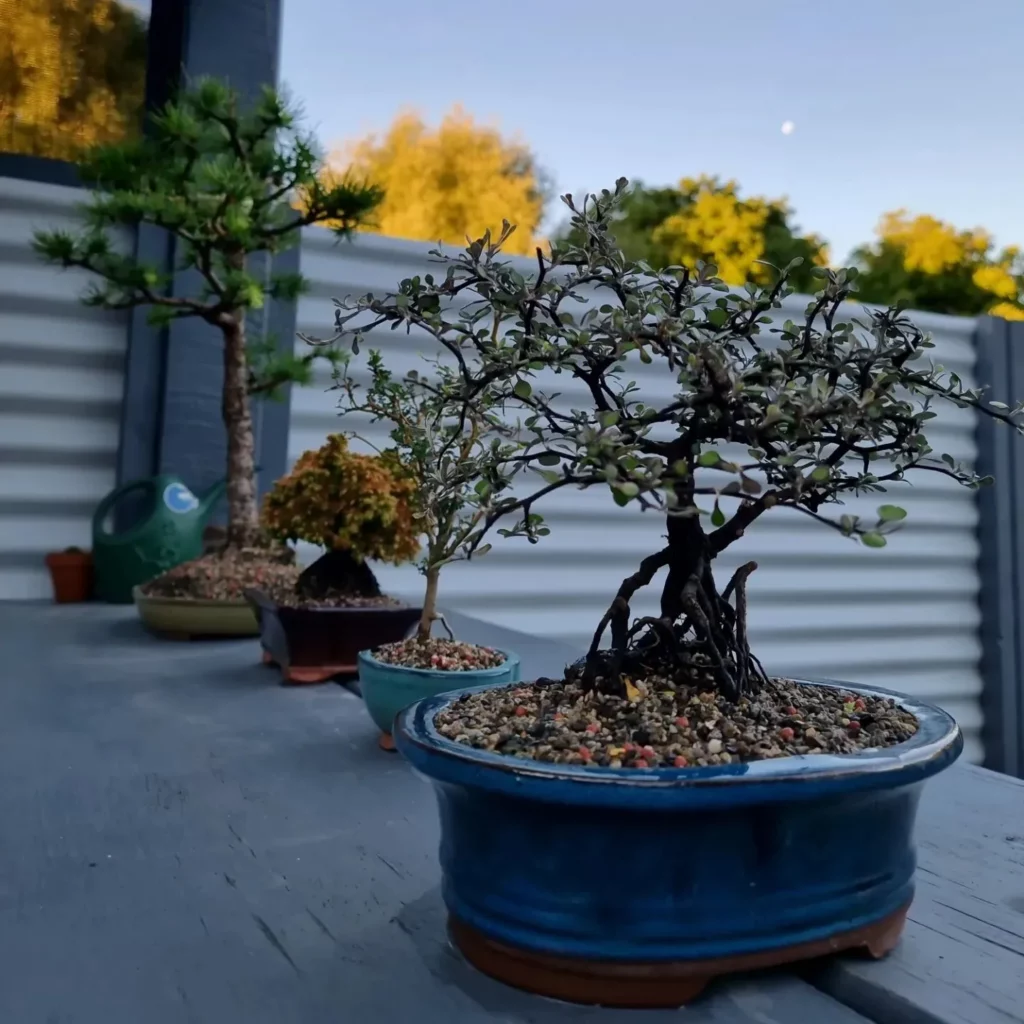
Proper fertilization is essential for the growth and development of your Japanese Larch Bonsai. By providing the necessary nutrients, you can ensure that your bonsai stays healthy and vibrant.
When fertilizing your Japanese Larch Bonsai, it is recommended to use a balanced bonsai fertilizer with a ratio of 10-10-10 or 20-20-20. This balanced blend of nutrients will provide the bonsai with a well-rounded diet.
Apply the fertilizer according to the instructions on the package. Typically, it is recommended to fertilize your Japanese Larch Bonsai every 4-6 weeks during the growing season, which is spring to fall. This regular fertilization schedule will supply your bonsai with the necessary nutrients to support its growth and ensure its overall health.
However, it is important to note that fertilizing should be avoided during the winter months when the bonsai is in its dormant phase. Since the bonsai is not actively growing during this time, it does not require additional nutrients. By refraining from fertilizing in winter, you will prevent potential damage to the bonsai.
Potting Japanese Larch Bonsai
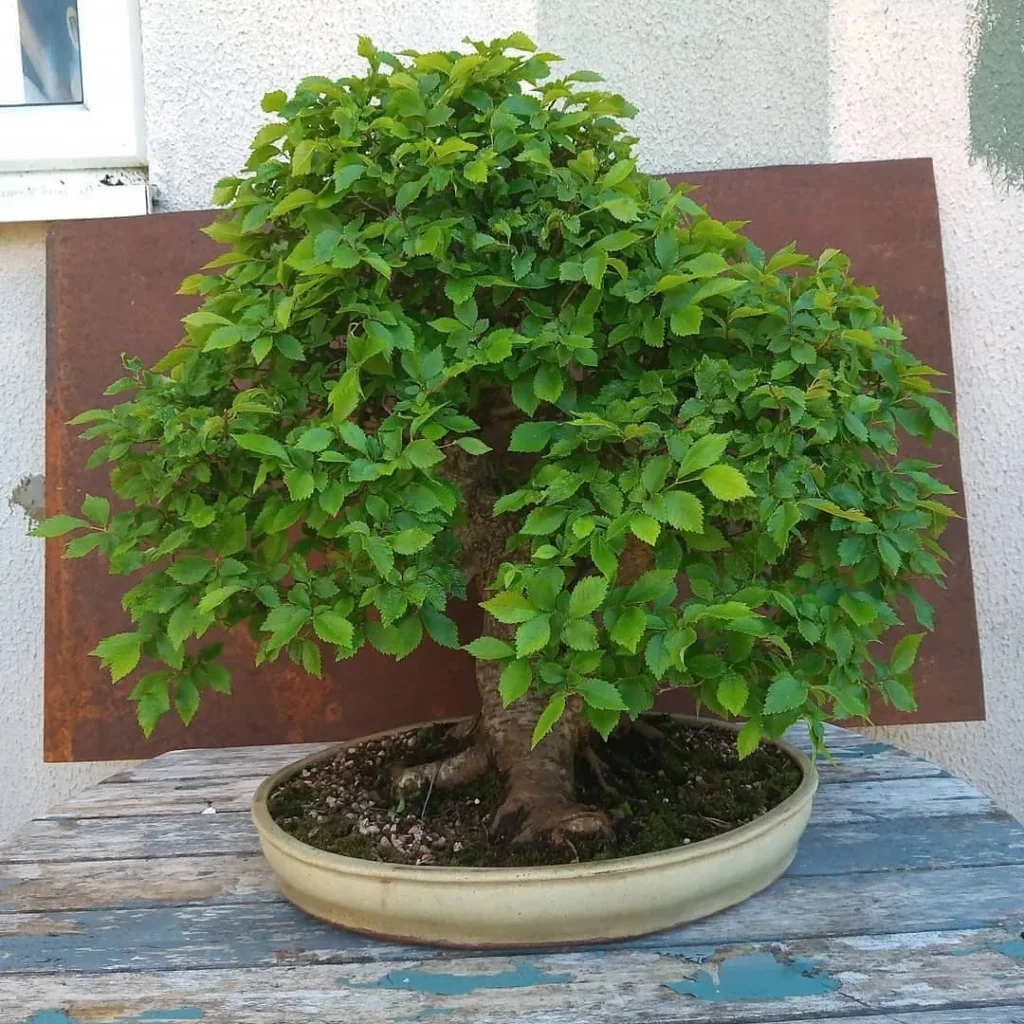
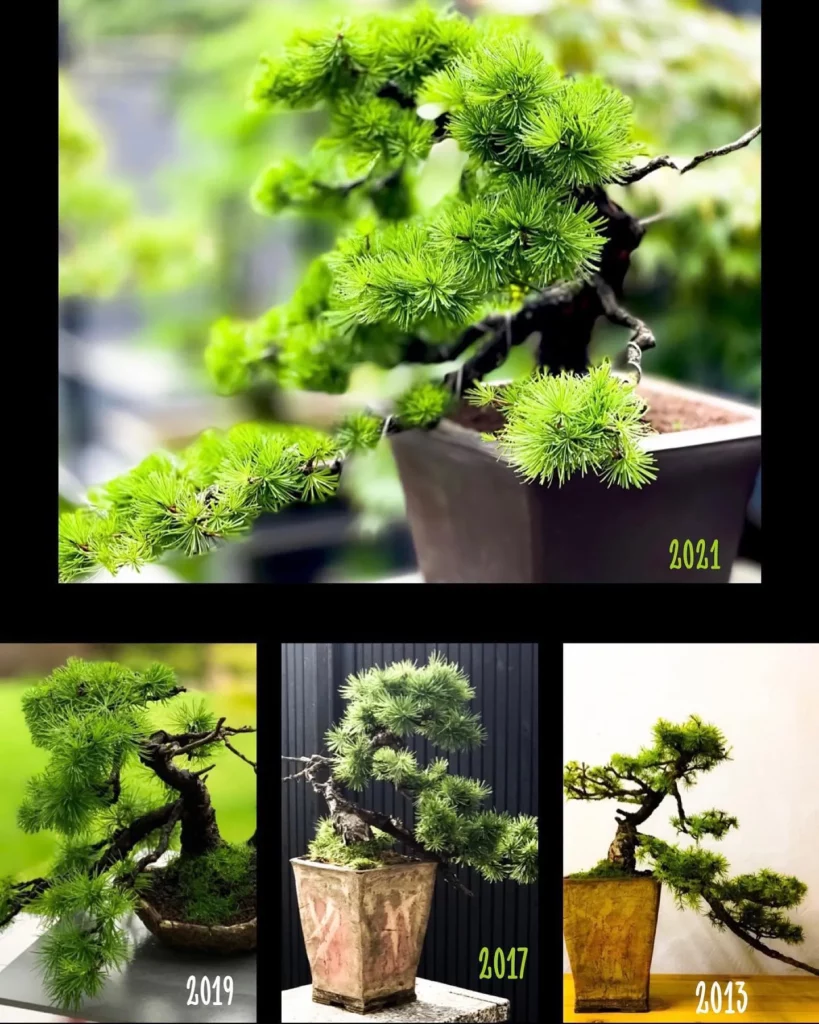
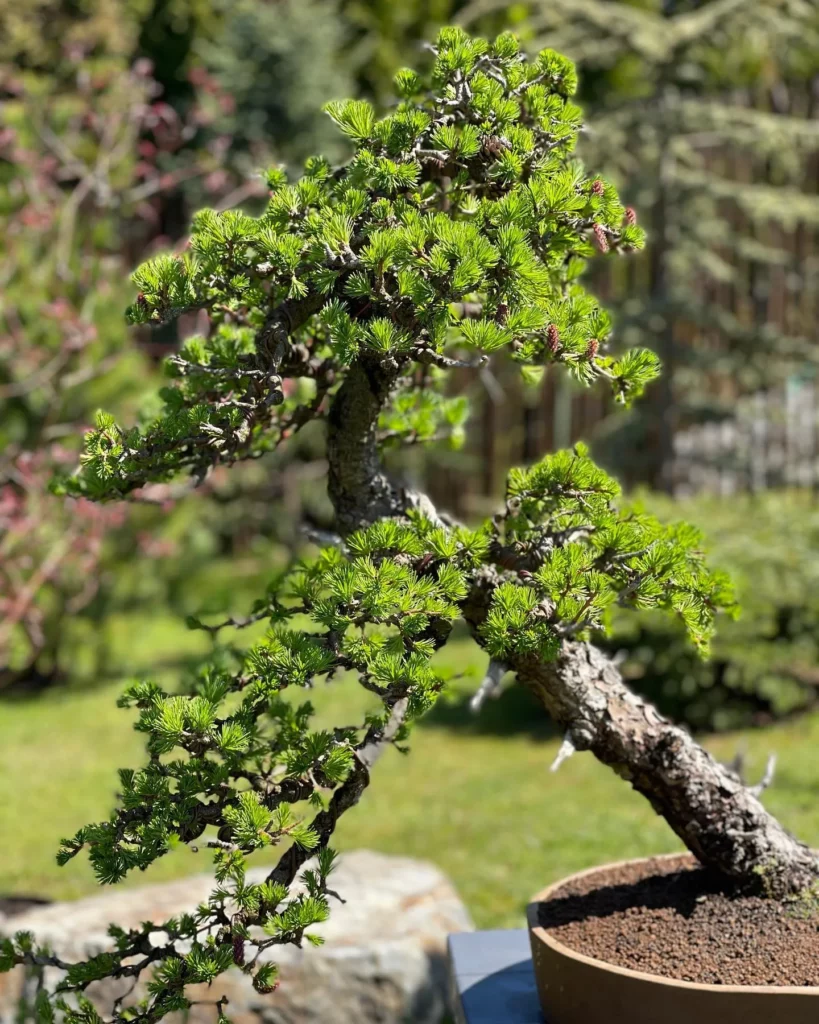
Proper potting is essential for the growth and health of your Japanese Larch Bonsai. It is recommended to repot your bonsai every 2-3 years to ensure optimal growth. Here is a step-by-step guide on how to pot your Japanese Larch Bonsai:
- Carefully remove the bonsai from its current pot. Gently loosen the soil around the roots to avoid damaging them.
- Trim the roots. Using sharp scissors or pruning shears, remove any long or damaged roots. Be careful not to prune too much, as the roots play a vital role in providing nutrients to the bonsai.
- Prepare the new pot. Choose a pot that is slightly larger than the current one, allowing room for the bonsai to grow. Make sure the pot has drainage holes to prevent waterlogging.
- Fill the pot with fresh bonsai soil. Use well-draining bonsai soil that allows water to flow freely through the pot. This will prevent waterlogging and promote healthy root growth.
- Place the bonsai in the new pot. Position the bonsai in the center of the pot, making sure it is stable and upright.
- Backfill the pot with bonsai soil. Fill in the gaps around the roots with soil, gently pressing it down to secure the bonsai in place.
- Water the bonsai. After potting, give your Japanese Larch Bonsai a thorough watering. This will help settle the soil and provide moisture to the roots.
- Place the bonsai in a suitable location. Find a spot that provides the right amount of light and protection for your bonsai to thrive.
Propagation of Japanese Larch Bonsai

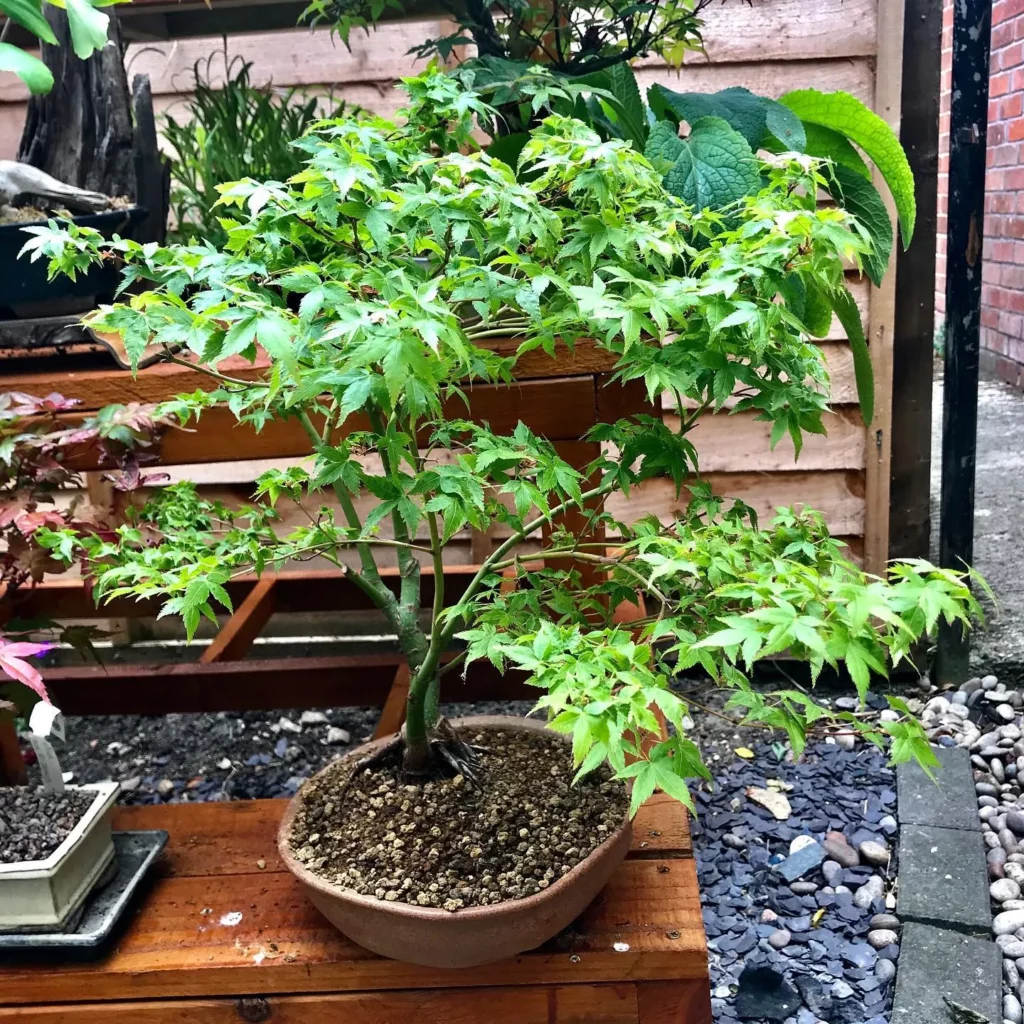
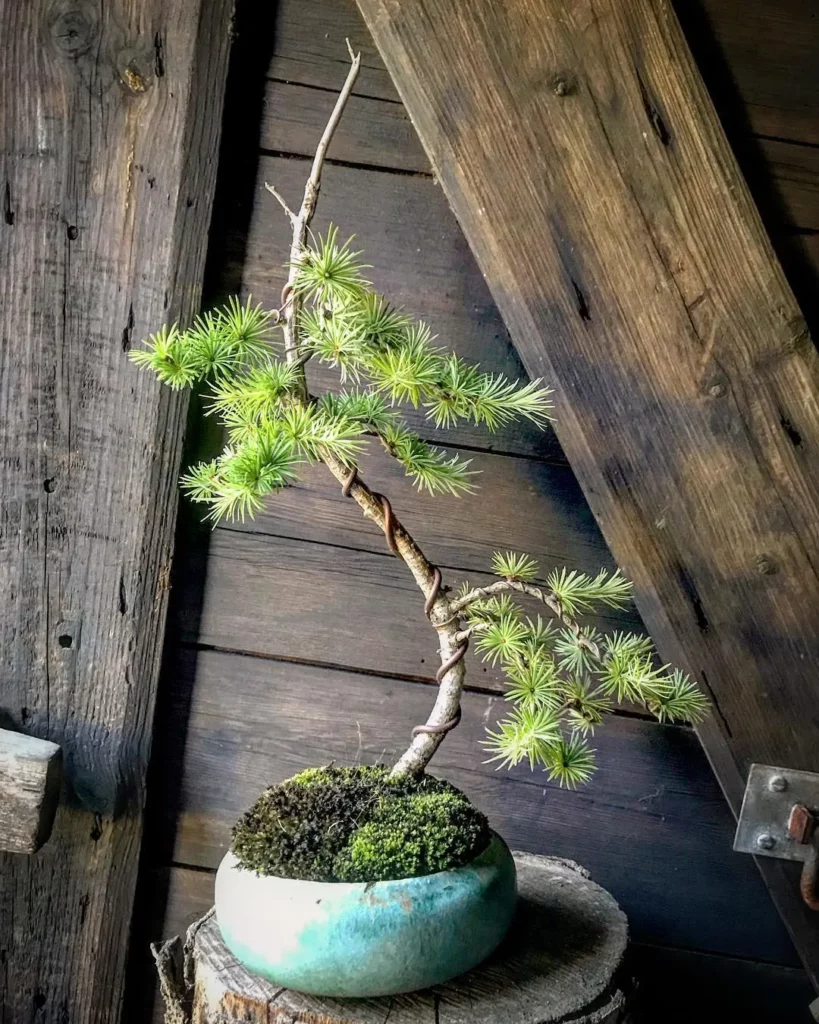
Japanese Larch Bonsai can be propagated through several methods, including seed germination, air layering, and hardwood cuttings. Each method offers its own advantages and challenges, allowing you to choose the most suitable approach based on your preferences and available resources.
1. Seed Germination
Propagation through seed germination is a fascinating and rewarding process. However, it requires patience and time, as it may take several years for the seedlings to develop into bonsai trees. To start, collect fresh seeds from a healthy Japanese Larch tree. Prepare a seed tray filled with well-draining bonsai soil and sow the seeds at a shallow depth. Keep the soil consistently moist and provide ample sunlight. Over time, the seeds will germinate and develop into young bonsai trees.
2. Air Layering
Air layering is a quicker method of propagation that allows you to create new bonsai trees from existing ones. Select a low-growing branch on the Japanese Larch tree and make a small incision on the bark. Apply rooting hormone to the wounded area and wrap it with moist sphagnum moss. Cover the moss with plastic wrap to create a humid environment. As the branch develops roots, you can detach it from the parent tree and plant it in a new pot.
3. Hardwood Cuttings
Propagating Japanese Larch Bonsai through hardwood cuttings is another effective technique. Take semi-hardwood cuttings from the parent tree during the summer months. Ensure the cuttings are around 4-6 inches long, with a few pairs of leaves. Remove the lower leaves and dip the cut end in rooting hormone. Plant the cuttings in well-draining soil and keep them in a warm, shaded area. With proper care, the cuttings will develop roots and grow into independent bonsai trees.
Growth and Development of Japanese Larch Bonsai
Japanese Larch Bonsai is renowned for its remarkable growth and development. When provided with proper care and regular maintenance, this bonsai can experience vigorous growth, sometimes up to one meter per year during its initial stages.
As the Japanese Larch Bonsai matures, its growth rate may slow down, but it will continue to evolve and refine its shape over time. To maintain the desired form and promote branching and ramification, regular pruning and wiring are essential.
Pruning allows you to control the size and shape of your bonsai by removing unwanted branches and encouraging new growth. Wiring, on the other hand, helps you guide the branches into the desired positions, creating an aesthetically pleasing composition.
Why regular pruning is important
- Controls the size and shape of the bonsai
- Removes unwanted branches and encourages new growth
- Enhances the overall aesthetics of the tree
The importance of wiring
- Allows you to guide the branches into the desired positions
- Helps create an artful composition
- Fosters the development of a balanced and harmonious bonsai
Pests and Diseases of Japanese Larch Bonsai
Japanese Larch Bonsai is relatively resistant to pests and diseases. However, it is important to be vigilant and monitor your bonsai regularly for any signs of trouble. Some common issues that may arise include:
- Aphid infestation: These tiny insects can cluster on the foliage, sucking sap from the leaves and causing them to curl or become distorted.
- Scale insects: These pests appear as small, oval-shaped bumps on the leaves or branches and can severely weaken the bonsai by feeding on its sap.
- Fungal diseases: Excessive moisture or poor drainage can lead to the development of fungal diseases, such as root rot or powdery mildew, which can affect the health and appearance of the bonsai.
To keep your Japanese Larch Bonsai healthy, it’s important to take swift action if you notice any signs of pests or diseases. Regularly inspect the bonsai for yellowing leaves, sticky residue, or discoloration, which are indicators of a problem. Treatments may include:
- Insecticides: If you have an aphid or scale infestation, you can apply an appropriate insecticide to control the pests and protect your bonsai.
- Fungicides: If your bonsai is affected by a fungal disease, using a fungicide can help inhibit the spread and promote recovery.
- Natural remedies: For those who prefer organic solutions, there are also natural remedies available, such as neem oil or homemade insecticidal soaps, which can help combat pests and keep your bonsai healthy.
Conclusion
Japanese Larch Bonsai is not just a plant, but a captivating art form that allows you to create a miniature masterpiece. To cultivate a thriving and beautiful bonsai, it requires care, attention, and patience. By understanding its appearance, light requirements, watering, fertilizing, potting, propagation, growth and development, as well as pests and diseases, you can embark on a rewarding bonsai journey.
Embrace the artistry of Japanese Larch Bonsai as it brings tranquility and elegance to your space. Its slender, feather-like foliage and vibrant green color create a visual feast for the eyes. With proper light, watering, and fertilizing, you can maintain the bonsai’s radiant beauty throughout the year. Repotting and propagating with precision will ensure its continued growth and refinement.
While pests and diseases may pose challenges, regular monitoring and swift action will safeguard the health of your Japanese Larch Bonsai. Remember, each step you take in caring for your bonsai nurtures its growth and contributes to the enduring beauty of this living sculpture. So, immerse yourself in the enchanting world of Japanese Larch Bonsai, and let its artistry inspire you every day.
FAQ
What is Japanese Larch Bonsai?
Japanese Larch Bonsai is a living sculpture that brings tranquility and elegance to any space, resembling a miniature version of a full-sized tree.
What does Japanese Larch Bonsai look like?
Japanese Larch Bonsai features slender, feather-like foliage with a conical shape. It has a vibrant green color that turns golden-yellow during autumn.
How much sunlight does Japanese Larch Bonsai need?
Japanese Larch Bonsai thrives in full sun to partial shade and requires at least 6 hours of direct sunlight each day.
How should I water Japanese Larch Bonsai?
Water the bonsai when the top inch of the soil feels dry to the touch. Ensure the soil is consistently moist but not waterlogged.
How often should I fertilize Japanese Larch Bonsai?
Use a balanced bonsai fertilizer with a ratio of 10-10-10 or 20-20-20. Apply the fertilizer every 4-6 weeks during the growing season, avoiding winter months.
When should I repot Japanese Larch Bonsai?
Japanese Larch Bonsai should be repotted every 2-3 years in early spring, just before its active growth phase, using well-draining bonsai soil.
How can I propagate Japanese Larch Bonsai?
Japanese Larch Bonsai can be propagated through seed germination, air layering, and hardwood cuttings.
How fast does Japanese Larch Bonsai grow?
Japanese Larch Bonsai has vigorous growth during its initial stages, with up to one meter of growth per year. Growth rate may slow down as the bonsai matures.
What pests and diseases should I watch out for with Japanese Larch Bonsai?
Japanese Larch Bonsai is relatively resistant to pests and diseases, but common issues include aphid infestation, scale insects, and fungal diseases.
How do I take care of Japanese Larch Bonsai?
By understanding its appearance, light requirements, watering, fertilizing, potting, propagation, growth and development, as well as pests and diseases, you can care for Japanese Larch Bonsai and enjoy its tranquility and elegance.





